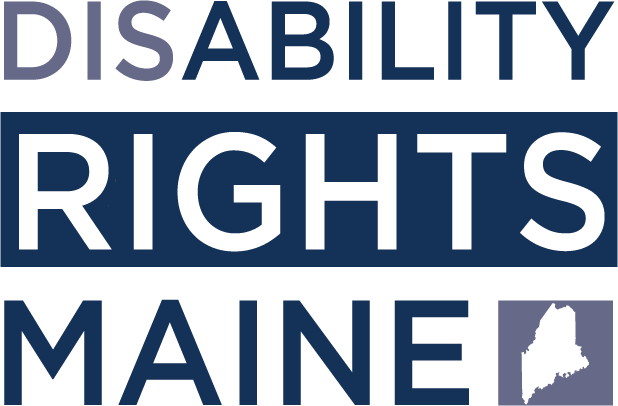When you think of bullying, you may picture a bigger student demanding lunch money from a smaller student at the back of a bus. Or, perhaps a demeaning comment made by one student about another’s clothing in a high school hallway. In reality, bullying is often subtle, persistent, and online.
Maine law recognizes the many forms that bullying can take: a written, spoken, electronic, or physical action which harms, or causes a student to fear harm to their body or property. It also includes an action that interferes with the rights of a student by creating an intimidating or hostile environment or interferes with a student’s academic performance or ability to participate in or benefit from the services, activities or privileges provided by a school. Importantly, the definition includes an action that is based on a student’s (or their association with another student’s) actual or perceived characteristics including race, color, religion, sex, ancestry, national origin, physical or mental disability, or sexual orientation – that results in the above negative effects.[1]
Sometimes mislabeled as rough-housing, name-calling, and teasing, bullying is a serious issue that negatively affects not only the student being bullied, but the person bullying and the school climate. Regardless of the label, bullying can cause a targeted student to have lower academic achievement, higher truancy rates, feelings of alienation from school, poor relationships with peers, loneliness, or depression.[2] When one of the students involved has a disability, unchecked bullying could deny the student’s right to a free and appropriate public education (FAPE) and access to the general education curriculum.
When bullying takes place, the onus should be on the school, not the students. Schools are expected to not only investigate individual complaints, but foster a culture of safety and inclusion. Research has shown that when schools directly address aggression toward others, bullying goes sharply down.[3] A study of Dr. Dan Olweus’s bullying prevention program found a 50% decrease in bullying incidents after two years of implementation.[4] Dr. Olweus’s program includes schoolwide and individual interventions comprised of surveys, conferences with the community, increased supervision, staff training, clear class rules, immediate consequences, ongoing follow-up meetings, and modelling kindness and compassion.[5]
With regard to students with disabilities, the US Office for Civil Rights (OCR) provided helpful guidance for families and schools in an October 2014 Dear Colleague letter.[6] OCR reminds us that students with disabilities are bullied disproportionately and warns that the bullying of a student with a disability on any basis can result in a denial of FAPE under Section 504 that must be remedied. Multiple studies have shown that students with disabilities are twice as likely (or more) to be bullied than their nondisabled peers.[7] OCR outlines the school’s obligations to address conduct that may constitute disability-based harassment and remedy a denial of FAPE.
OCR recommends the school “promptly convene the IEP team or the Section 504 team to determine whether, and to what extent: (1) the student’s educational needs have changed; (2) the bullying impacted the student’s receipt of IDEA FAPE services or Section 504 FAPE services; and (3) additional or different services, if any, are needed, and to ensure any needed changes are made promptly.” [8] By following these recommendations, schools are in a good starting position to address the needs of the individual student with a disability. If the student does not yet have an IEP or Section 504 Team, a bullying event may trigger the school’s ‘child find’ obligation – to identify all students who may need special education services.
At a recent conference in Portland, ‘The Maine Event: Creating Positive Climates for Youth’[9] , I had the opportunity to join representatives of Maine Department of Education (MDOE) and Collaborative for Perpetual Innovation (CPI ) in a panel discussion on bullying and the rights of students. The panel members fielded questions from over 100 audience members. The audience was interested to discuss the intersection of a student’s right to be educated in the least restrictive environment and maintaining classroom safety – some school staff had questions on how best to support the student with a disability if there are cross-accusations of bullying. The panel provided many of the suggestions above including quick response, investigation, looking at the schoolwide climate, and convening an IEP or Section 504 Team.
If a child in your life is experiencing bullying or harassment at school, a report to the school should prompt them to begin the process of investigating and intervening. If you are unsatisfied with the school’s response, every school must have an anti-bullying policy that includes a procedure to appeal the school’s response. And, if the child has an IEP or Section 504 Team, you can call a meeting to discuss the impact. In any case, you can advocate for improvements to the schoolwide climate. If you are not pleased with the outcome of your efforts, you may want to reach out to the school board, MDOE, or an attorney.
[1] M.R.S.A. 20-A, § 6554.
[2] Melody Musgrove, USDOE Office of Special Education and Rehabilitative Services (OSERS) Dear Colleague Letter (2013), http://www.ed.gov/policy/speced/guid/idea/memosdcltrs/bullyingdcl-8-20-13.doc
[3] American Academy of Child Psychiatry and Adolescents, Bullying Fact Sheet 2010 (2011), http://www.aacap.org/App_Themes/AACAP/docs/resource_centers/resources/fact_sheets/Bullying_Fact_Sheet_2010.pdf
[4] Bullying Intervention Strategies That Work, University of Maine Cooperative Extension Publications (2002), https://extension.umaine.edu/publications/4424e/bullying-intervention/
[5] Id.
[6] Catherine Lhamon, USDOE Office For Civil Rights (OCR) Dear Colleague Letter (2014), https://www2.ed.gov/about/offices/list/ocr/letters/colleague-bullying-201410.pdf
[7] PACER, Bullying Statistics – National Bullying Prevention Center (2016), http://www.pacer.org/bullying/resources/stats.asp
[8] Catherine Lhamon, USDOE Office For Civil Rights (OCR) Dear Colleague Letter (2014), https://www2.ed.gov/about/offices/list/ocr/letters/colleague-bullying-201410.pdf
[9] The Maine Event – CPI Maine, The Collaborative for Perpetual Innovation, CPI Maine, https://cpimaine.org/the-maine-event/
